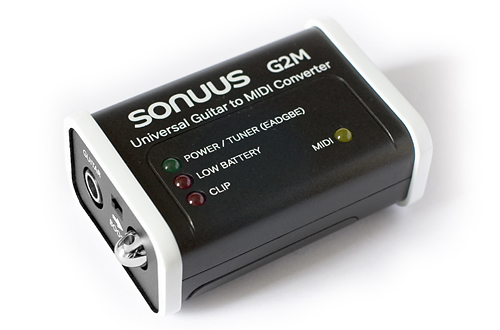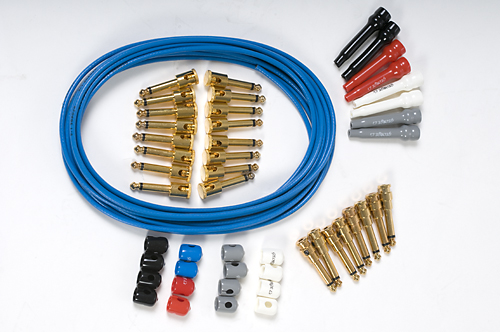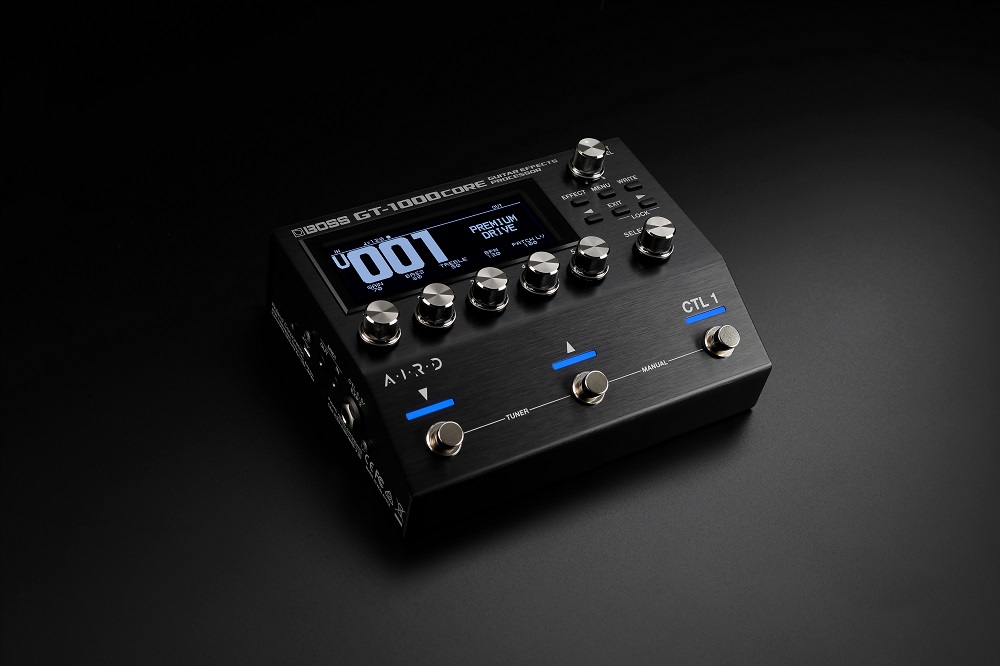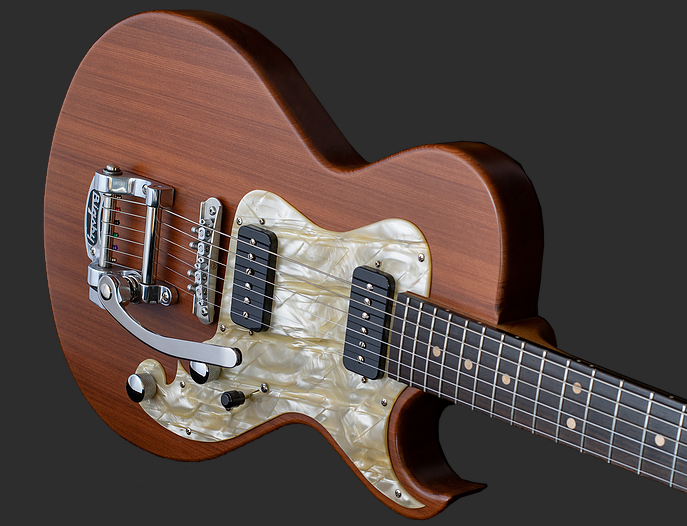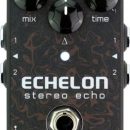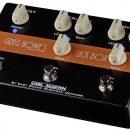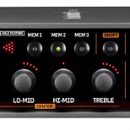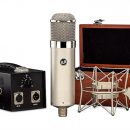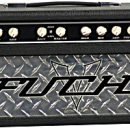A fascination with processed sound has long inspired great songs created by great guitarists and writers. But lets face it — guitar effects and guitar synths just don’t quite measure up to some of the thick, lush sounds created by a true keyboard synthesizer. How many times have you secretly wished for the opportunity to plug into your keyboardist’s rig?
| Category | Value | Rating |
| Features | 20% | |
| Usability | 25% | |
| Sound | 25% | |
| Documentation & Support | 10% | |
| Price | 20% | |
| OVERALL RATING = 3.3 3.6 stars or better: Outstanding, WIHO Award 3 stars or better: Worth considering 2 stars or better: Suited to specific needs 1 star or less: Not recommended |
||
Axe slingers rejoice! The dream is over, and now a reality — without the need to retrofit your guitar with funky pickups or other modifications, and without breaking the bank for something you’re not quite sure about in the first place. Plug’er in and control that black- and white-keyed monster to your heart’s content! We know you’ve always wanted to lay down a solo on a Minimoog, or play a sad cello line to orchestrate your acoustic guitar piece! With the Sonnus G2M Universal Guitar to MIDI Converter, the basics are really that simple.
It may not be quite that easy as all that to achieve your desired sounds, however. Some modifications to your playing technique may be required for best results, and the G2M operates in mono-only. But with a street price of only $99, for less than the price of a stomp box you get to tap into your keyboard and enter some unchartered territory, sure to provide a new source of inspiration.
Features
The Sonuus G2M Guitar to MIDI Converter is a very straightforward little black box, but when you think about all the outside contributing factors to make this unit work effectively, the G2M has all-important factors accounted for:
• ¼” input jack
• Signal Boost switch (so even your vintage single-coil pickups will work)
• Power / Tuner LED (built-in tuner for standard EADGBE tuning)
• Low Battery indicator LED
• Clip indicator LED
• MIDI message indicator LED
• Standard 5-pin MIDI Out jack
• ¼” Signal Thru output jack (to pass your analog guitar tone to your amp)
• 9V battery power only.
Usability
The Sonuus G2M is definitely a plug-and-play tool. Once all input and output connections have been made, you’re ready to explore a new world as your options have just expanded exponentially.
For purposes of this review, we connected our Ernie Ball Music Man guitar (fitted with humbucking pickups) to the Sonuus G2M with a standard instrument cable, then another audio cable from the G2M to our guitar amp, and we connected the MIDI Out to a Korg Triton LE workstation with a standard 5-pin MIDI cable.
Setting the signal level into the G2M was simple – the intermittent lighting of the Clip LED let us know that we did not need to engage the Boost switch as our humbuckers provided a hot enough signal level.
Next, we wanted to ensure the guitar was properly tuned. Using the onboard tuner was as simple as playing each string and viewing the Tuner LED. Proper note detection is automatic. The Pulsar tuning technology works by way of an LED indicator where rapid flashing reflects out of tune and the closer you get the note to being in tune, the LED indicator will pulses more slowly. The tuner function is always operational – and so is the signal passing through the G2M. If you’re using the tuner function in live setting, you’ll want to ensure you have someplace else in your signal chain to mute your output.
Unfortunately, the tuner only recognizes standard tuning — it doesn’t recognize alternate tunings, drop tunings, etc. However, those tunings don’t make much sense from the keyboard perspective, so when you’re ready to play some synth, we would advise using traditional tuning.
The G2M is powered by 9V battery. Though you don’t have an option for DC power supply, the G2M will run for approximately seventy hours on one battery. When the battery reaches low levels of power, the Low Battery LED will illuminate letting you know it’s getting close to time for a new battery. The unit will continue to work until the battery is completely expired. Of course with many pedal board power supplies, you can obtain power cables that have a 9V battery connector on one end for pedals that otherwise lack a barrel connector.
Having the signal Thru connection was of course essential for routing our actual guitar signal to our amp setup. Again, in live situations, you’ll want to ensure you have a mute switch in your signal path to engage/disengage your guitar rig or MIDI rig for independent operation. There was no way to mute/stop MIDI control from the interface, so we had to lower our keyboard’s volume when not in use.
The Sonuus G2M is a universal guitar pitch to MIDI converter, meaning it does not require any special pickups. It operates solely from the analog/magnetic signal provided by your guitar. As a result, the unit can only track monophonic lines. When we tried to play a chord or accidentally played more than one note, the G2M was unable to recognize the signal and sometimes triggered alien notes not intended. Though the G2M provides low-latency pitch-to-MIDI conversion, fast articulate lines are not an option. If you play too quickly, the G2M can’t discern proper pitch, causing the signal to be unidentifiable.
For those of you who have experienced guitar synths utilizing hex pickups, you already know that triggering a synthesizer requires very specific and consistent techniques different from simply playing guitar. Using the Sonuus G2M is no exception – you will need to utilize (or develop) excellent muting and articulation techniques in order to gain consistent triggering results. From a set-up standpoint, the Sonuus G2M is a plug and play device, but in order to master the unit and use it effectively, you will need to experiment and develop some consistent techniques.
In addition to developing the right playing technique, experimenting with different pickup positions (neck or bridge) along with tone control variations can help obtain better MIDI tracking response. We found using the neck position pickup with the tone control set at half provided the best response from our test guitar.
In relation to the Korg Triton, not all patches worked equally well. The piano program was most difficult with which to achieve useful results, but then you have to consider how many truly monophonic lines you typically play on a piano. Sounds that worked particularly well with the G2M included bass guitar, brass, and string patches.
Sound
The Sonuus G2M provided a clean, unaltered signal to our guitar rig via the Thru connection on the unit. We could not detect any tone loss or signal level difference with the unit in the signal path.
From a MIDI standpoint, the G2M does not create any sound.
Documentation and Product Support
The Sonuus G2M comes with a very detailed Owner’s Manual. The manual is extremely detailed, but also to the point. And if reading instructions is not your bag, there are illustrations for settings and connections to get you started.
Sonuus also provides a User Forum to share your experiences, tips and tricks with other G2M users.
Price
The Sonuus G2M ($129.00 MSRP) can be purchased for only $99.00. Considering the obvious plug-and-play, no-guitar-modification access to the world of guitar synth and on-board tuner, we believe the G2M to be an excellent value.
Contact Information
Sonuus
www.sonuus.com
| Evaluation Short-List |
|

